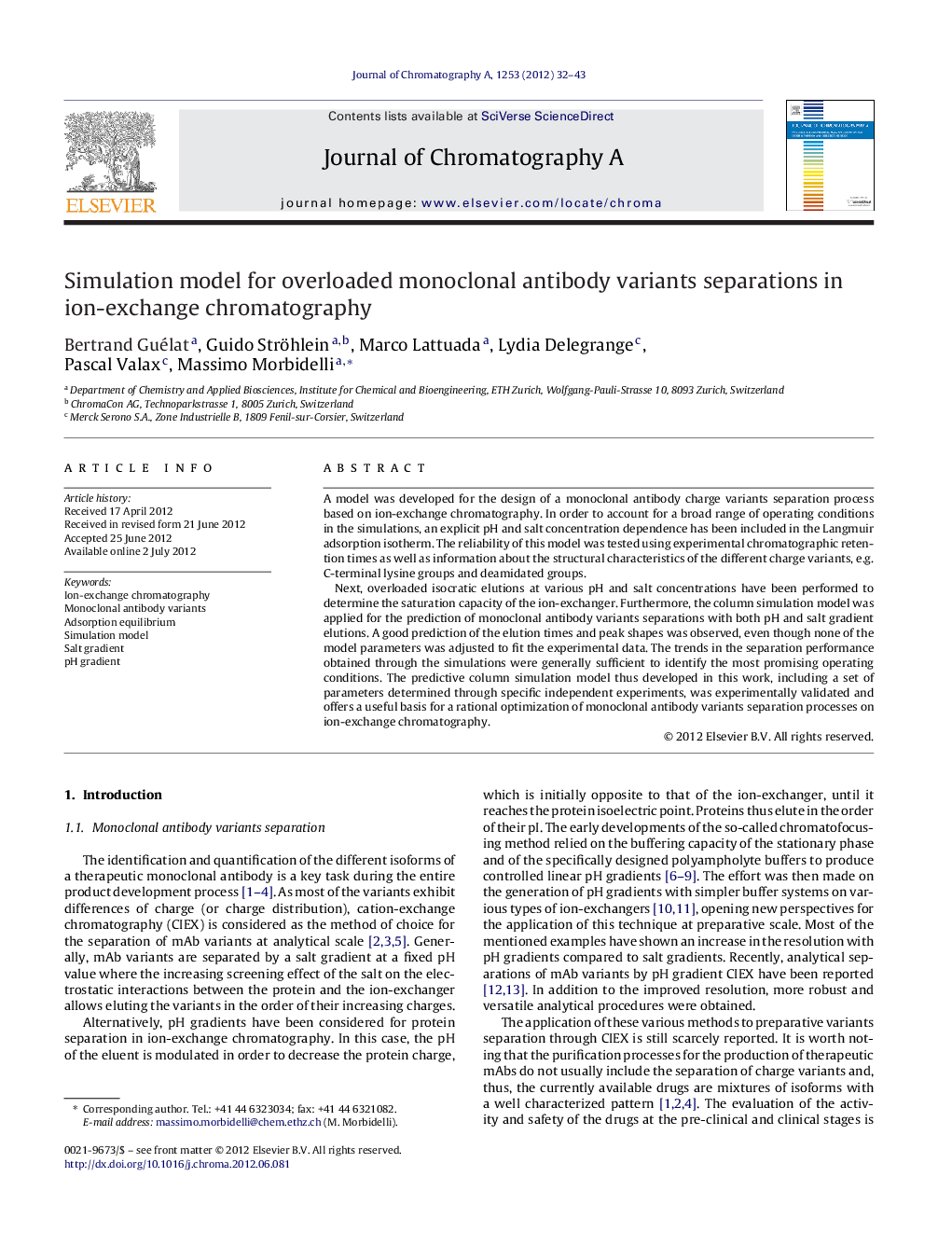| Article ID | Journal | Published Year | Pages | File Type |
|---|---|---|---|---|
| 1200516 | Journal of Chromatography A | 2012 | 12 Pages |
A model was developed for the design of a monoclonal antibody charge variants separation process based on ion-exchange chromatography. In order to account for a broad range of operating conditions in the simulations, an explicit pH and salt concentration dependence has been included in the Langmuir adsorption isotherm. The reliability of this model was tested using experimental chromatographic retention times as well as information about the structural characteristics of the different charge variants, e.g. C-terminal lysine groups and deamidated groups.Next, overloaded isocratic elutions at various pH and salt concentrations have been performed to determine the saturation capacity of the ion-exchanger. Furthermore, the column simulation model was applied for the prediction of monoclonal antibody variants separations with both pH and salt gradient elutions. A good prediction of the elution times and peak shapes was observed, even though none of the model parameters was adjusted to fit the experimental data. The trends in the separation performance obtained through the simulations were generally sufficient to identify the most promising operating conditions. The predictive column simulation model thus developed in this work, including a set of parameters determined through specific independent experiments, was experimentally validated and offers a useful basis for a rational optimization of monoclonal antibody variants separation processes on ion-exchange chromatography.
► The adsorption equilibrium of proteins in ion-exchange chromatography was modeled. ► The dependence upon pH and salt concentration was modeled. ► Overloaded salt and pH gradient elutions were predicted. ► The model can be used to optimize the preparative mAb variants separation.
